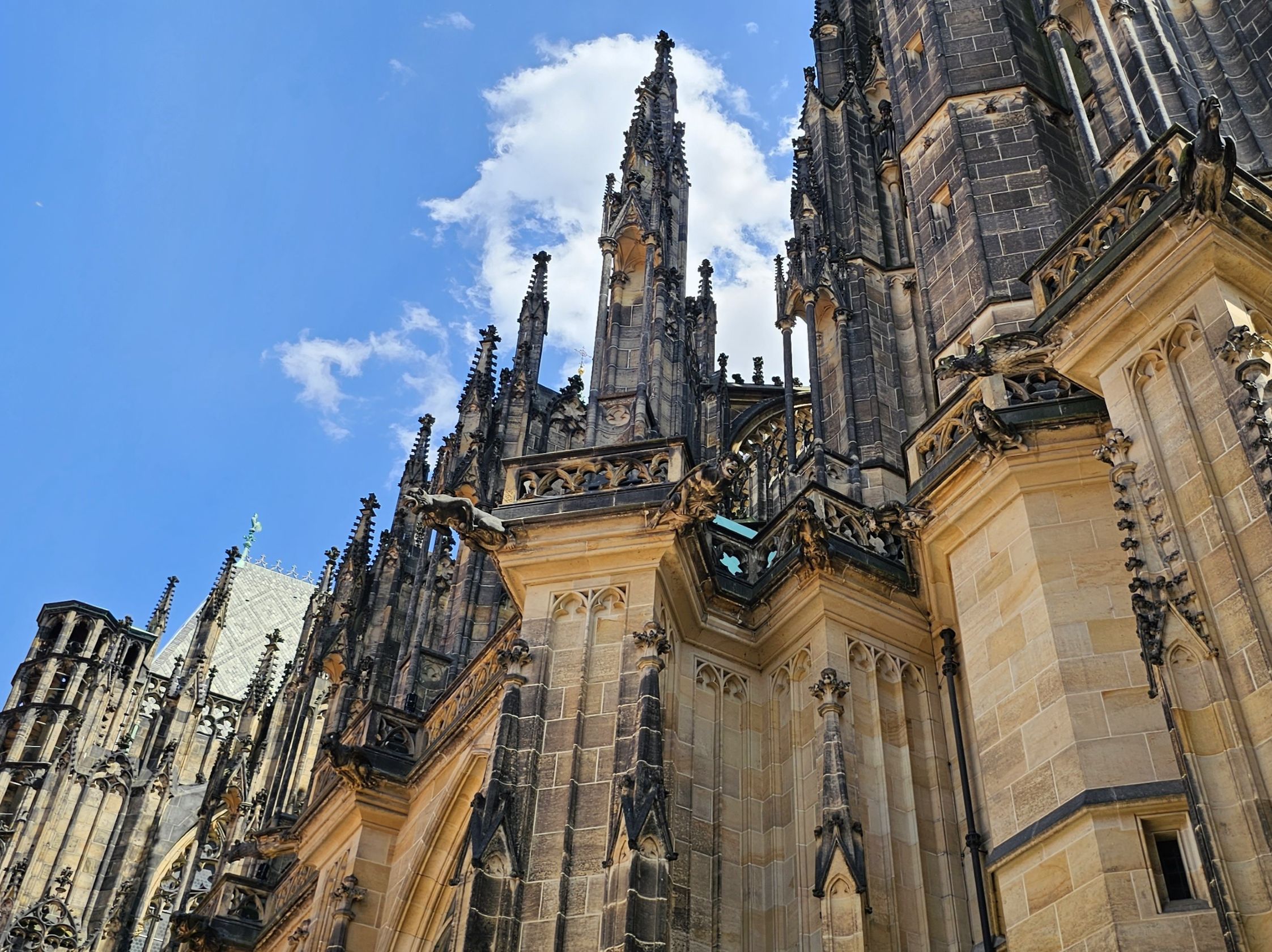Prague, often called the “City of a Hundred Spires,” is a place where history whispers through cobblestone streets and Gothic towers. At the center of it all lies Prague Castle, the largest ancient castle complex in the world, and within its grounds three attractions stand out as must-sees: the majestic St. Vitus Cathedral, its breathtaking rooftop viewpoint, and the enchanting Golden Lane (Zlatá ulička). Together, they offer visitors a journey through centuries of architecture, power, and everyday life in the Czech capital.
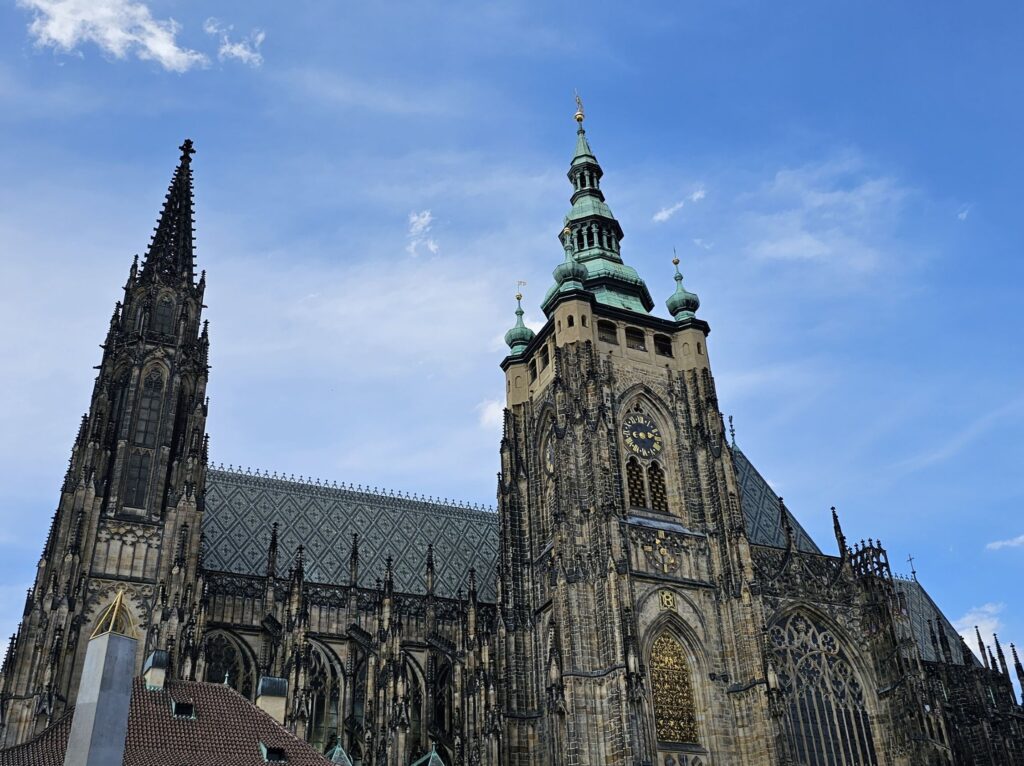
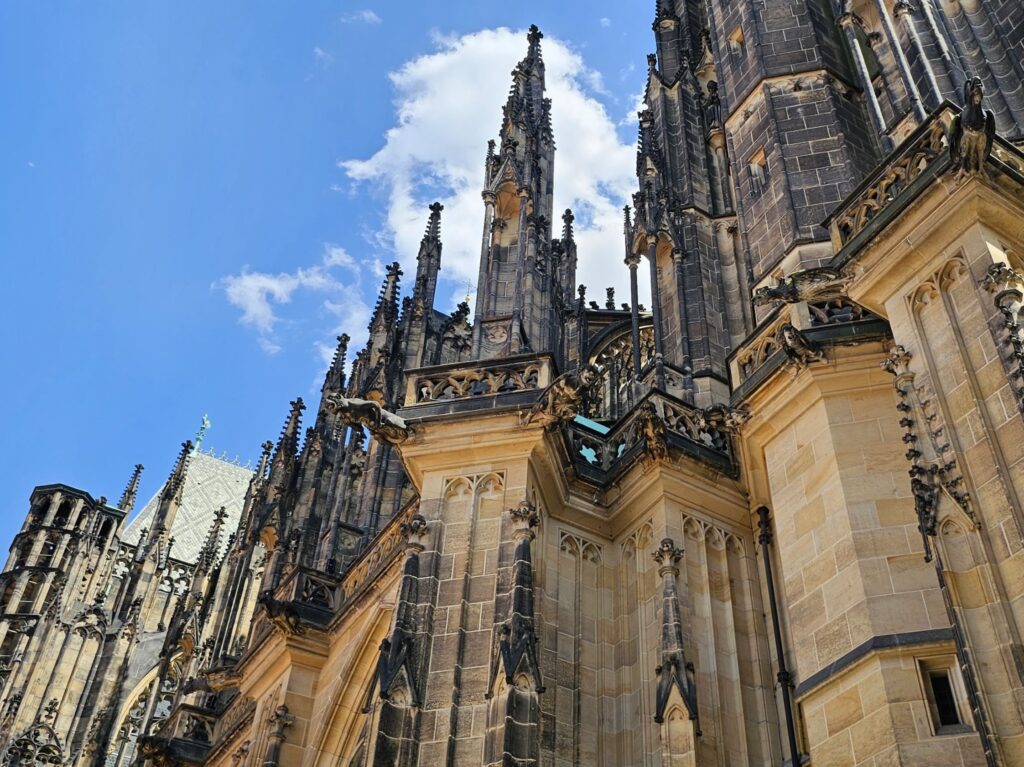
St. Vitus Cathedral: A Gothic Masterpiece
The crown jewel of Prague Castle is undoubtedly the St. Vitus Cathedral (Katedrála svatého Víta). Construction began in 1344 under King Charles IV, though the cathedral was not fully completed until 1929—nearly 600 years later. This long timeline explains the mix of Gothic, Renaissance, and Baroque elements woven into its design.
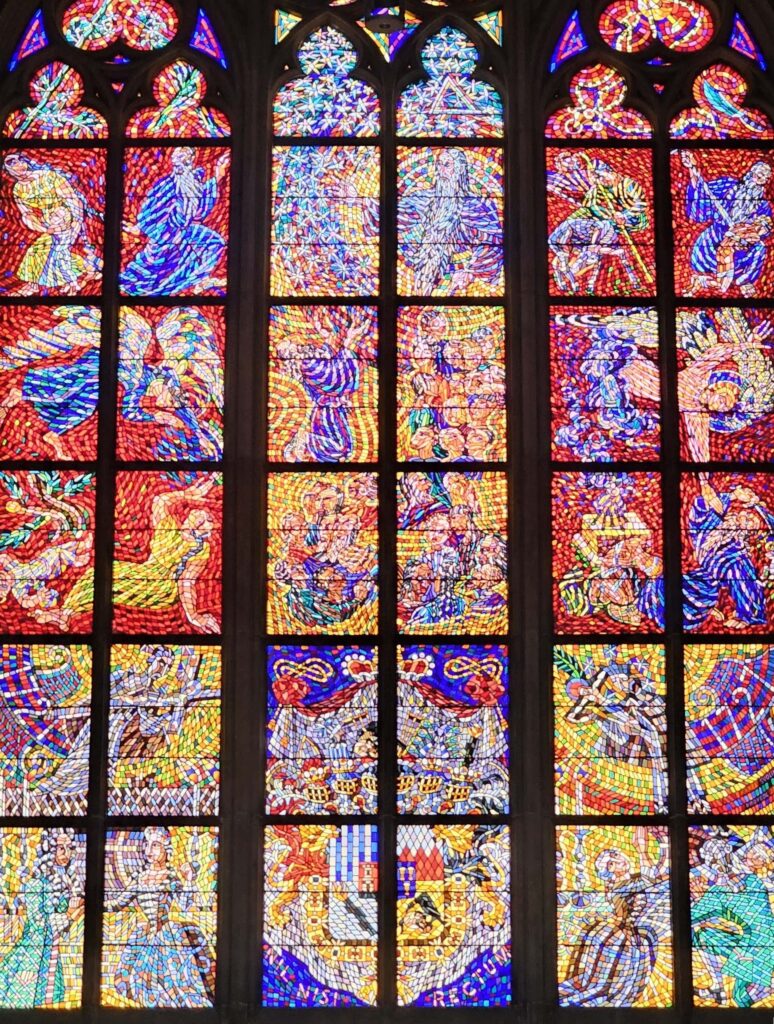
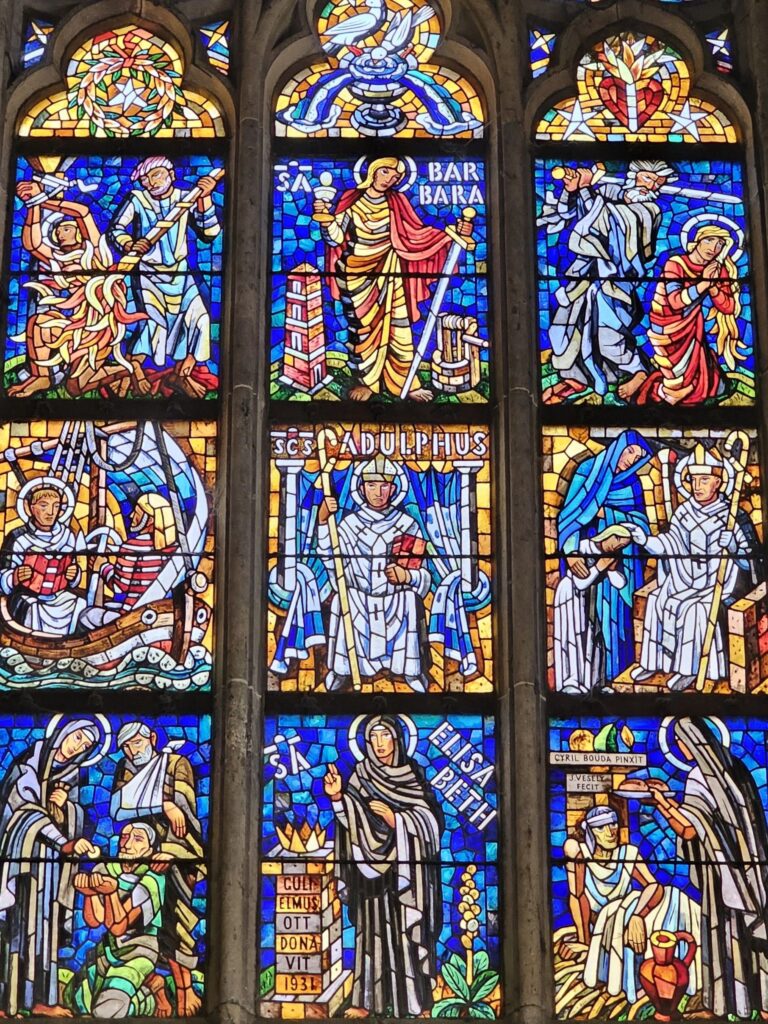
From the outside, the cathedral’s soaring spires and intricate stone carvings dominate the castle skyline. Stained glass windows glow brilliantly in the sunlight, particularly the famous window designed by Czech artist Alfons Mucha. Inside, the space is vast and awe-inspiring, with high ribbed vaults, massive pillars, and delicate rose windows that flood the interior with colored light.
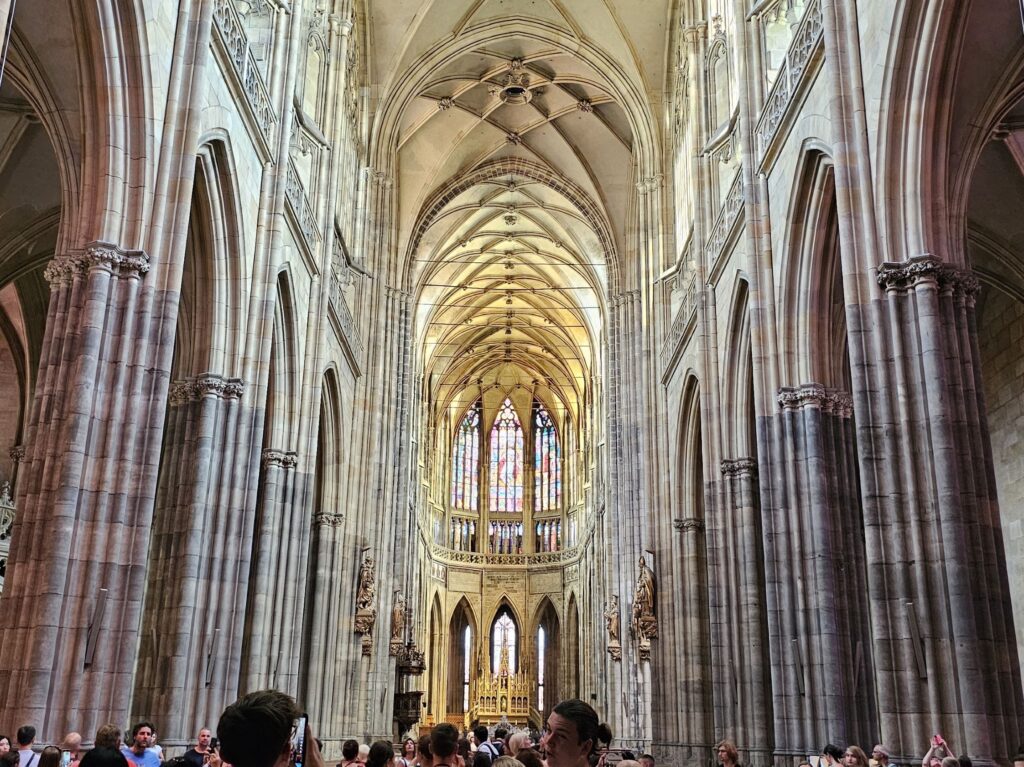
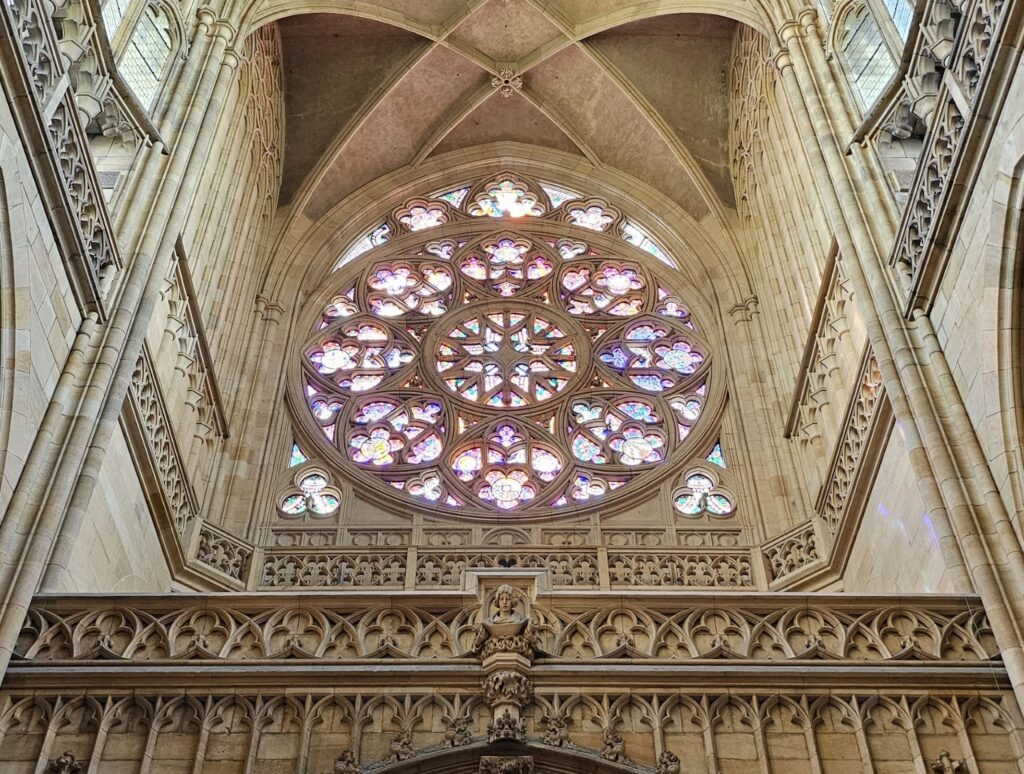
The cathedral is more than an architectural gem—it is the spiritual heart of the Czech nation. Coronations of Czech kings and queens were held here, and the cathedral also houses the tombs of Bohemian monarchs, including Charles IV himself. The chapel of St. Wenceslas, adorned with semi-precious stones, remains one of the most sacred sites in the country.
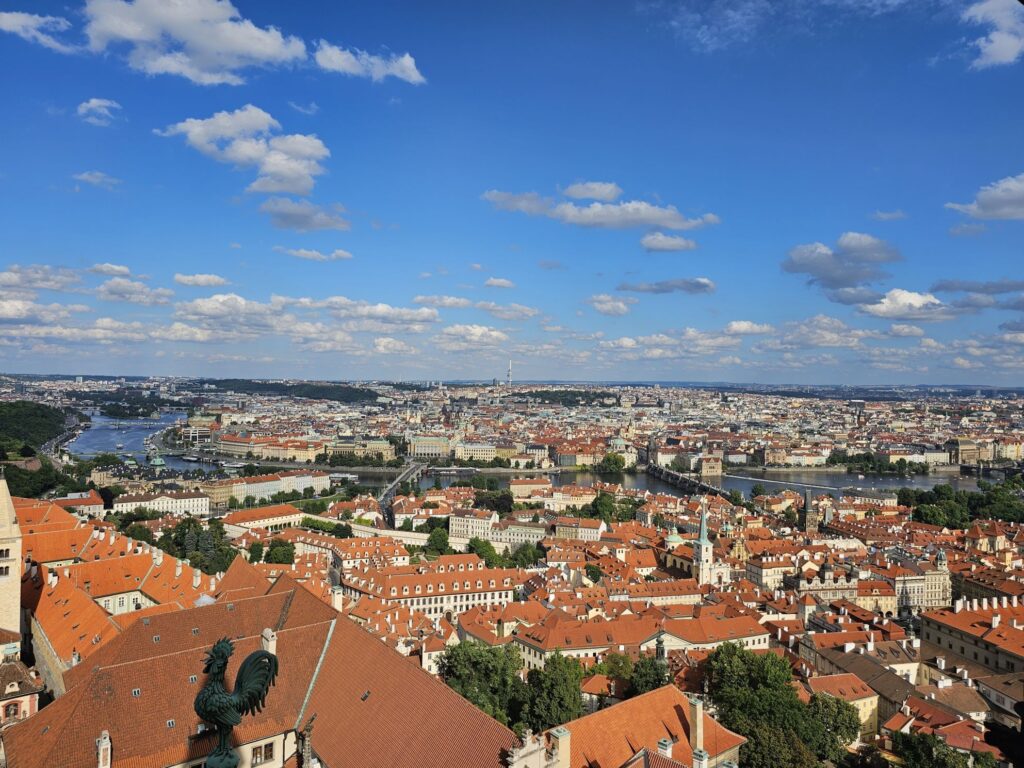
The Rooftop Viewpoint: Climbing the 287 Steps
One of the highlights of visiting St. Vitus Cathedral is ascending to the Great South Tower, which leads to a panoramic rooftop viewpoint. Be prepared for a workout: the spiral staircase consists of 287 narrow steps, winding tightly upward with limited passing space. It’s not an easy climb, but the reward at the top is absolutely worth it.
From the tower, you’re treated to one of the best views in Prague. The red-tiled roofs of the Old Town stretch into the distance, the Vltava River winds gracefully below, and the Charles Bridge connects the historic quarters like a stone ribbon. On clear days, you can see all the way to the rolling hills beyond the city.
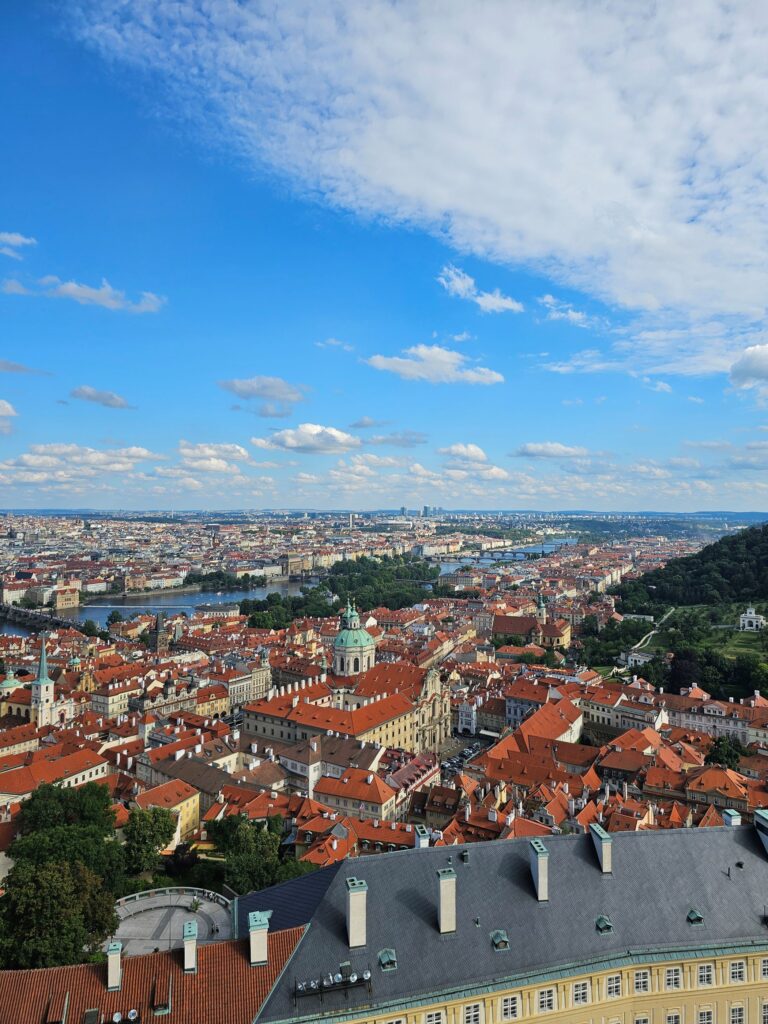
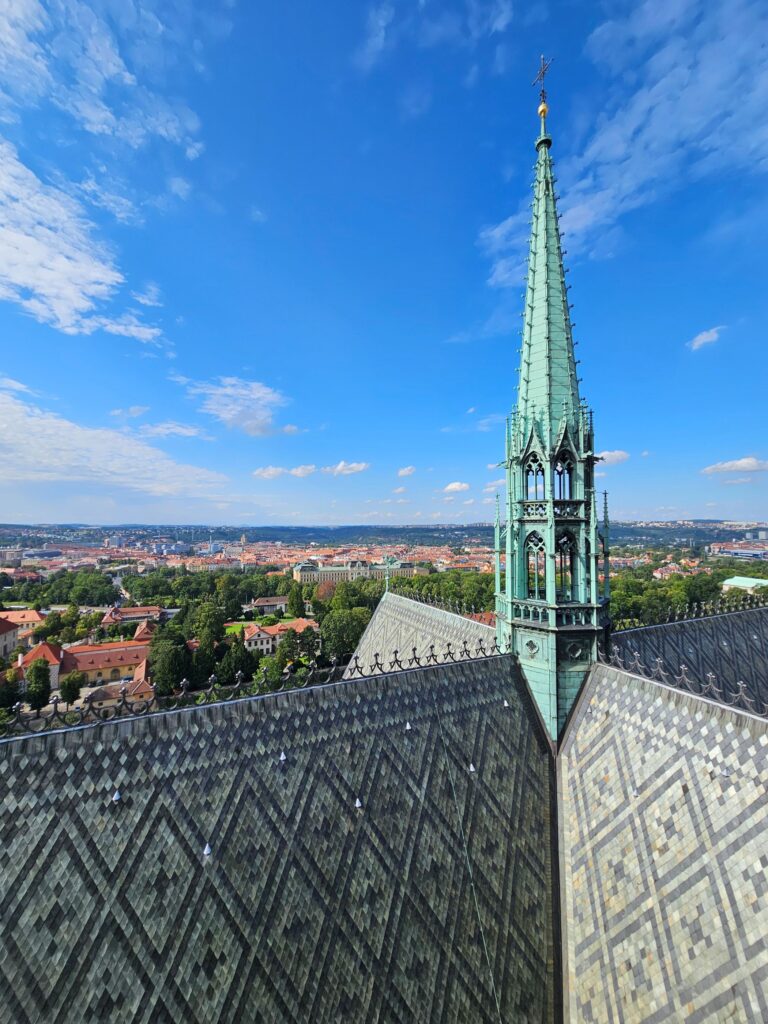
The climb itself feels like stepping into history—every stone on the staircase is worn from centuries of footsteps. Once at the top, the fresh air and the panoramic view provide a sense of freedom that contrasts beautifully with the solemn grandeur of the cathedral below.
To put the height into perspective: the viewpoint stands at around 90 meters above ground, equivalent to climbing to the top of a 30-story building. Yet the experience is more intimate than a modern skyscraper observation deck; here, you’re surrounded by medieval stonework, Gothic spires, and the ringing of ancient bells.
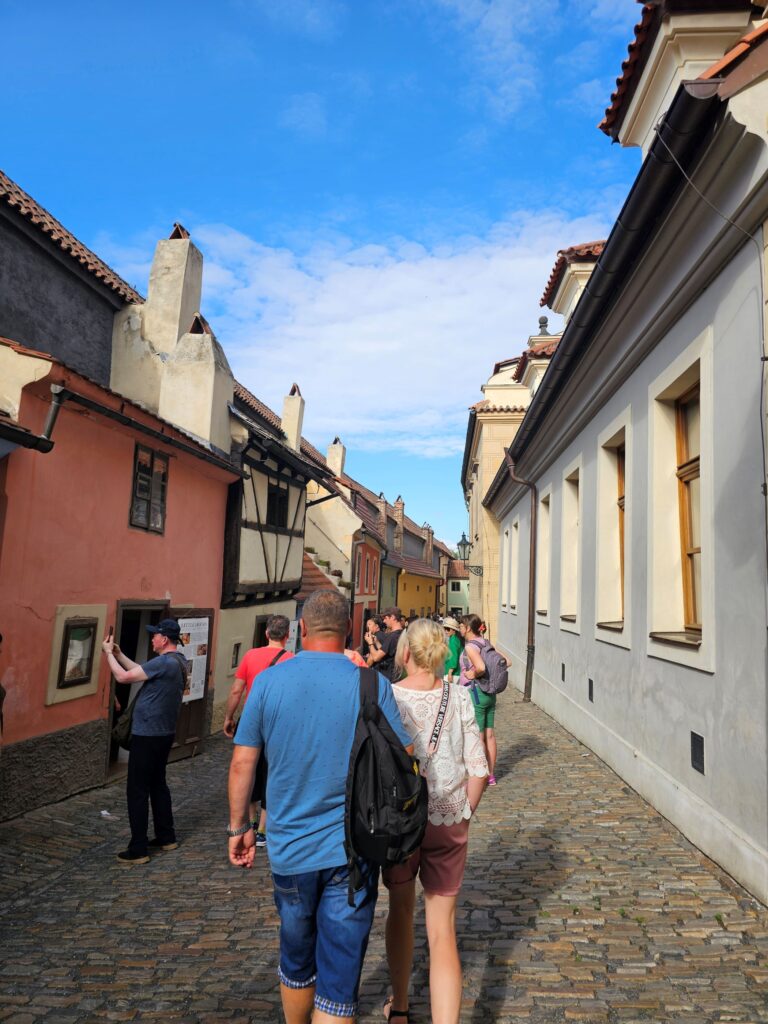
Golden Lane: Where History Lives
Just a short walk from the cathedral lies the charming Golden Lane (Zlatá ulička), a narrow street lined with colorful 16th-century cottages. Despite its romantic name, the lane wasn’t filled with goldsmiths but rather castle guards, servants, and artisans. Later, in the 19th and 20th centuries, the lane became home to writers and artists—including Franz Kafka, who lived in house No. 22 for a short time.
Today, Golden Lane feels like stepping back in time. The small houses are painted in pastel colors, each restored to reflect life from different periods. Some are furnished as medieval workshops, others as modest living quarters, and several now function as souvenir shops or small museums. Walking down the lane, it’s easy to imagine the hum of daily life centuries ago, from soldiers sharpening weapons to seamstresses sewing by candlelight.
The lane may be touristy, but it retains a fairytale charm. Its scale—tiny doors, low ceilings, and cobblestones—contrasts with the grandeur of the cathedral, reminding visitors that Prague’s history belongs not only to kings and queens but also to ordinary people.
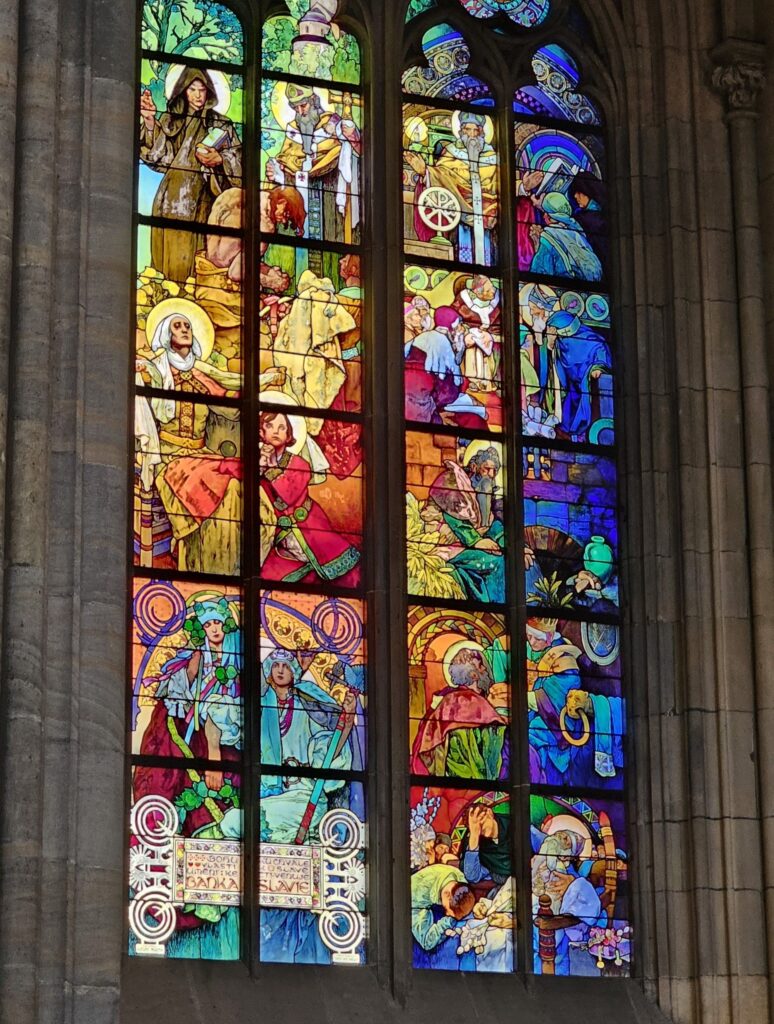
My Experience at Prague Castle
When I visited, I began in awe at St. Vitus Cathedral. The stained glass windows cast vibrant colors across the stone floor, and the sheer height of the nave made me feel small yet inspired. After exploring the chapels and crypts, I gathered my courage and climbed the 287 steps to the rooftop viewpoint. The climb was narrow and slightly dizzying, but the reward was unforgettable—Prague stretched out like a storybook, with the castle walls behind me and the river glistening in the distance.
Later, wandering through Golden Lane, I felt a completely different atmosphere. The tiny houses made me smile with their dollhouse-like charm. House No. 22, associated with Franz Kafka, was especially moving; standing in the same room where he once wrote, I felt connected to the literary history of the city. I ended the visit with a coffee at a nearby café, reflecting on how these three sites capture the essence of Prague: grand, intimate, and timeless all at once.
Visitor Tips
- Timing: Arrive early in the morning to avoid the largest crowds, especially for the rooftop climb.
- Tickets: Entry to the cathedral and Golden Lane is included in Prague Castle combination tickets; the rooftop viewpoint has a small additional fee.
- Clothing: The cathedral is an active place of worship, so dress respectfully.
- Fitness: The rooftop climb requires stamina—287 steps with no elevator. Wear comfortable shoes.
- Photography: Bring a wide-angle lens for the cathedral’s interiors, and be ready for breathtaking panoramic shots from the tower.
- Golden Lane: Visit late in the afternoon when tour groups have thinned; the street feels more atmospheric then.
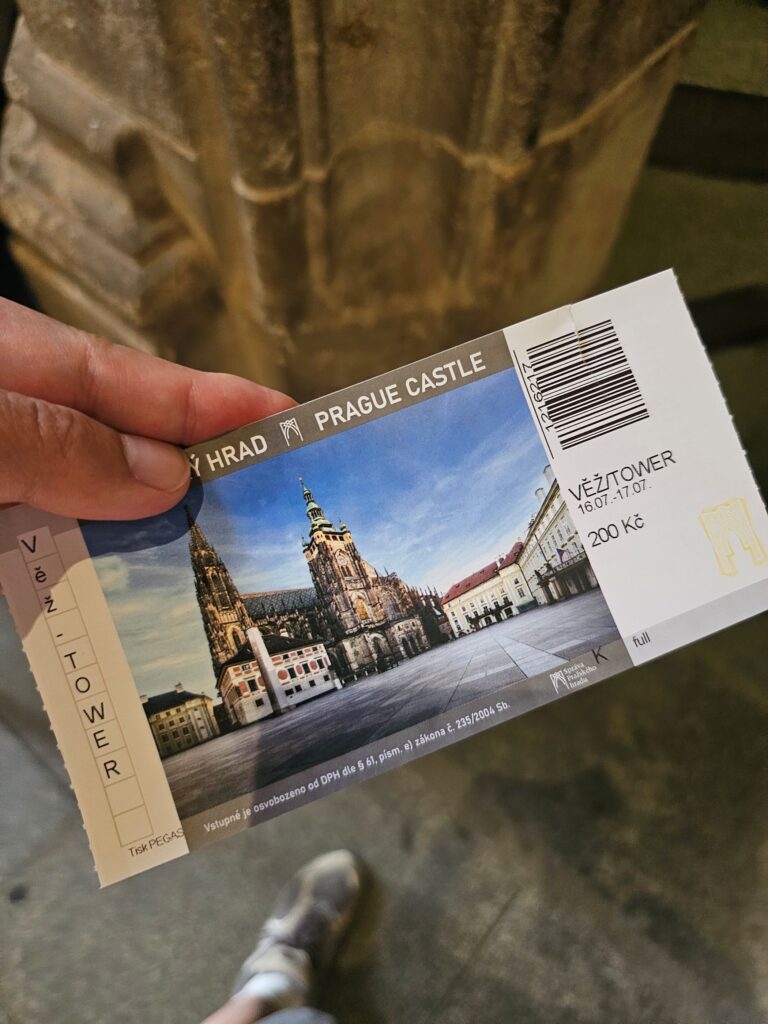
Why This Trio Matters
Together, St. Vitus Cathedral, the rooftop viewpoint, and Golden Lane capture the soul of Prague Castle. The cathedral represents faith and national identity; the rooftop offers perspective and beauty; and Golden Lane preserves the voices of ordinary lives. Visiting them is like walking through chapters of Czech history, each with its own mood and lesson.
For travelers, this trio is not just sightseeing—it’s an immersion in the story of Prague.
Key Information
- St. Vitus Cathedral
- Location: Prague Castle, Prague, Czech Republic
- Construction: Begun 1344, completed 1929
- Highlights: Gothic architecture, Mucha stained glass, St. Wenceslas Chapel, royal tombs
- Rooftop Viewpoint (Great South Tower)
- Access: Inside St. Vitus Cathedral
- Climb: 287 steps, ~90 meters high (~30 floors)
- View: Panoramic cityscape of Prague and beyond
- Golden Lane (Zlatá ulička)
- Location: Within Prague Castle complex
- Built: 16th century
- Highlights: Colorful cottages, Kafka’s house, historic exhibitions
Wenceslas Square, Prague: The Beating Heart of Czech History and Culture
Wallenstein Palace in Prague: A Baroque Gem Amid Political Power and Garden Serenity

